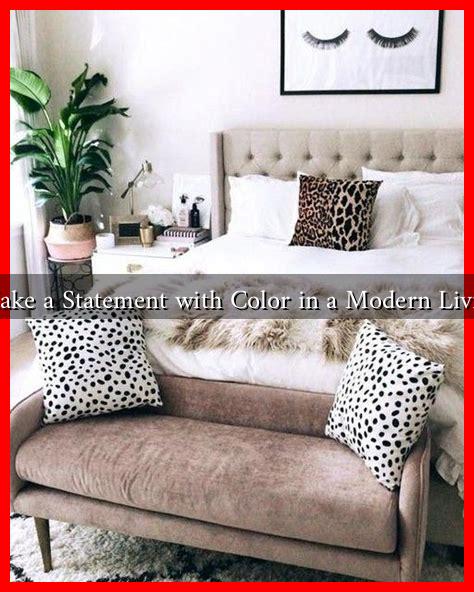-
Table of Contents
How to Make a Statement with Color in a Modern Living Room
Color is one of the most powerful tools in interior design, capable of transforming a space from mundane to magnificent. In a modern living room, the right color palette can create a mood, define a style, and even influence the perception of space. This article explores how to make a statement with color in your living room, offering practical tips, examples, and insights to help you achieve a stunning aesthetic.
The Psychology of Color
Before diving into color selection, it’s essential to understand the psychology behind colors. Different hues evoke different emotions and reactions:
- Red: Energizing and passionate, red can create a sense of warmth and excitement.
- Blue: Calming and serene, blue promotes relaxation and tranquility.
- Yellow: Cheerful and uplifting, yellow can brighten a space and enhance creativity.
- Green: Refreshing and natural, green brings a sense of balance and harmony.
- Purple: Luxurious and sophisticated, purple adds a touch of elegance.
Understanding these associations can help you choose colors that align with the atmosphere you want to create in your living room.
Choosing a Color Palette
When selecting a color palette for your modern living room, consider the following approaches:
- Monochromatic: Use varying shades of a single color to create depth and interest. For example, a palette of different blues can evoke a serene oceanic feel.
- Analogous: Choose colors that are next to each other on the color wheel, such as blue, blue-green, and green, for a harmonious look.
- Complementary: Pair colors that are opposite each other on the color wheel, like blue and orange, to create a vibrant contrast.
According to a study by the Institute for Color Research, people make a subconscious judgment about a person, environment, or product within 90 seconds of initial viewing, and between 62% to 90% of that assessment is based on color alone. This statistic underscores the importance of thoughtful color selection in your living room.
Incorporating Color into Your Living Room
Once you’ve chosen a color palette, it’s time to incorporate it into your living room design. Here are some effective strategies:
- Accent Walls: Paint one wall in a bold color to create a focal point. For instance, a deep navy blue wall can serve as a stunning backdrop for lighter furniture.
- Furniture: Opt for colorful furniture pieces, such as a bright yellow sofa or a teal armchair, to make a statement without overwhelming the space.
- Textiles: Use colorful cushions, throws, and rugs to introduce color in a more subtle way. These elements can be easily changed to refresh the look of the room.
- Artwork: Hang vibrant artwork that incorporates your chosen color palette. This not only adds color but also personalizes your space.
Case Studies: Successful Color Implementations
Several designers have successfully used color to make statements in modern living rooms:
- Kelly Wearstler: Known for her bold use of color, Wearstler often combines unexpected hues, such as pink and green, to create dynamic spaces that feel both modern and inviting.
- Jonathan Adler: Adler’s designs frequently feature bright colors and playful patterns, demonstrating how to use color to create a fun and lively atmosphere.
These examples illustrate that with creativity and confidence, color can be used to enhance the beauty and functionality of a living room.
Conclusion
Making a statement with color in your modern living room is not just about choosing the right hues; it’s about understanding the emotional impact of those colors and how they interact with your space. By selecting a thoughtful color palette and incorporating it through various design elements, you can create a living room that reflects your personality and style. Remember, the key is to balance bold choices with harmonious elements to achieve a cohesive look. For more inspiration on color in interior design, visit Houzz.


